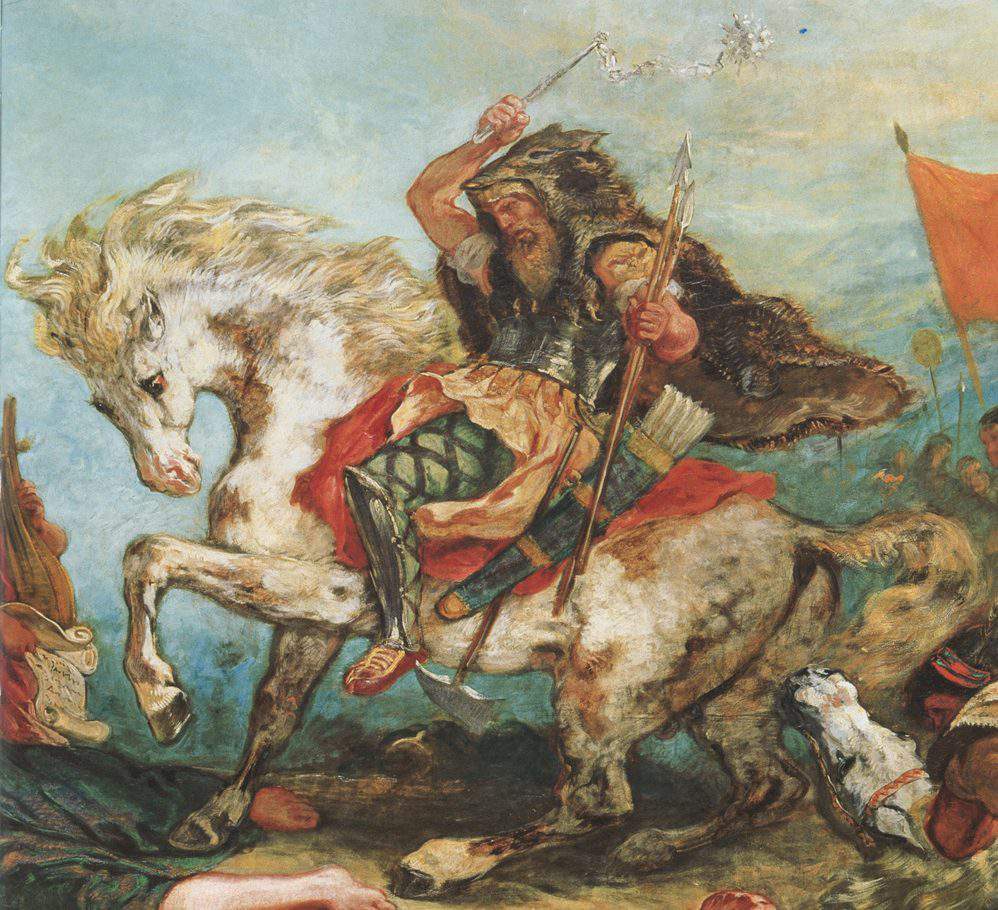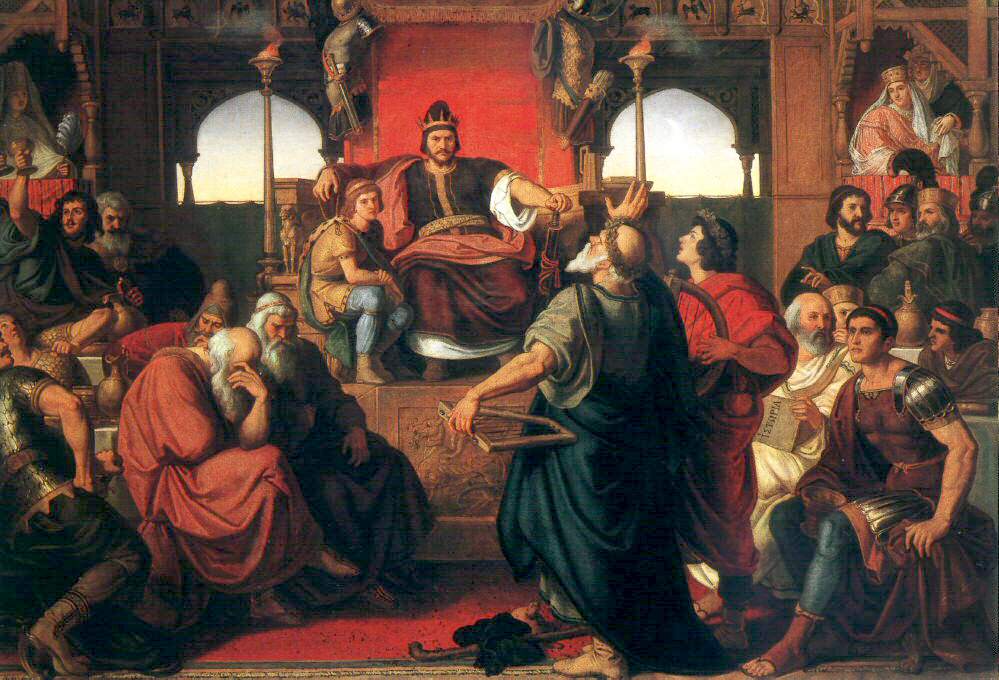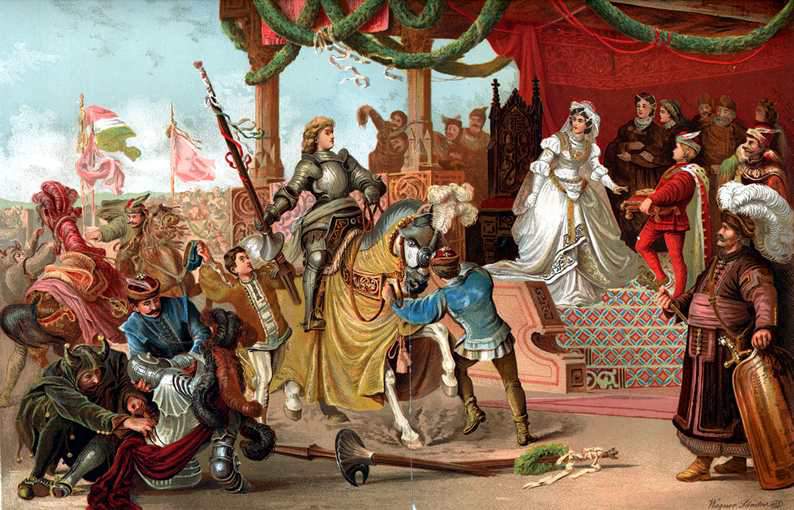The most feared Hungarians – myth, literature, history; part 5
Our candidates for today’s article are those Hungarians, who stroke fear in the hearts of the past enemies of Hungary. Only hearing their name would make them whisper the words: ‘God save us from the arrows of the Hungarians’. The names on this list are well known to Hungarians because of the myths and sayings concerning their victories on the battlefield, and for wreaking havoc among the enemies of Hungary with their sheer presence. We chose to highlight three characters today as they were great leaders of their forces, either personally or as a general.
If you have not yet read the previous articles of the series or you are simply interested in some of the most famous Hungarian figures, you can find out more about the Strongest (Part 1), Bravest (Part 2), Smartest (Part 3) and Greatest (Part 4) Hungarians by clicking on the previous links.
Attila, the Scourge of God

Attila, or Attila the Hun, was the leader of the Huns from 434 until his death in March 453. He was ruler to a multi-ethnic tribal empire in Central and Eastern Europe. While he ruled over the lands, he was one of the most feared enemies of the Roman Empire. He plundered the Balkans twice; he went as far as to try and conquer parts of the Roman Empire, namely lands of modern-day France. The farthest he was able to push his campaign was Aurelianum or Orléans, shortly after, he was defeated in the Battle of the Catalaunian Plains.
The following is a translation of a portion of the work of Wass Albert describing the victories of the Huns according to the myths:
The Sword of God was pointing Westwards in Attila’s hands.
The Alps trembled from the thundering hooves of the Huns’ horses. The Hun army flooded Thüringen like high water, and when they reached the Rhine and the Seine, they defeated the barbars, the goths and as many as 17 countries became vassals to the Empire of Attila. Byzantium trembled in terror behind their stone walls and Rome prepared for war. The Huns overrun Gaul and Attila came to a halt there. He ordered his men to build a command tower of sorts from carts and saddles so that he can see far on the Catalaunum plains.
The legions of Rome arrived during the cover of the dark, and they lined up in front of the Huns, shoulder by shoulder, shield by shield awaiting the charge of the Huns. But the camp of the Huns remained silent, no more than the whispering of the winds they heard. The dawn arrived covered in thick fog and when the red sun appeared the horizon, suddenly, out of nowhere someone sounded the horn. The fog divided for a moment and in front of the dazzled Romans, stood the shadowy figure of Attila himself. He stood in front of an uncountable number of warriors, on horseback, and the sun was shining red behind him. Then the fog clouded over everything again. – The Scourge of God and the Horsemen of Death are here – the legionaries whispered between themselves in the dark.
They were trembling while waiting for the attack, but nothing moved. Silent fell over the thick fog. And as the sun kept rising and the fog was gone, the two armies facing each other could be seen in their full splendour. As the Romans blinked into the blinding disk of the sun, the Huns launched their attack. The land was thundering and shaking under hooves of hundred thousand horses and the myriad of whistling arrows shot into the sky have darkened the heavens. Men against men, horse against horse, the battle went on through the whole day. Dusk came as the night went over the horizon shivering in horror. The death rattle of people has vanished amidst the clashing of swords.
The spirit of the warriors who have fallen fought on, as the night came crawling. That night, thousands of Huns met their ends and found their way into the seventh heaven of the Warlord, which was for those, who lost their lives in battle. According to the beliefs of the Huns, every fallen warrior could bring the spirit of those whom they defeated in battle to the other world as their servant in the afterlife. And when morning came, only Attila and his Huns remained on the plains of Catalaunum. The Roman legions retreated during the cover of the night. The Huns buried their dead and they gathered their pillage and returned to their home amidst the Carpathians. They spent the Winter with weapon-making and breaking in new horses and when Spring came, they set off Southwards with Attila at their head.

The people of Concordia and Pádua were fleeing mindlessly from them. Verona, Brescia and Cremona have opened their gates before Attila and surrendered to him. And when he reached Rome, the whole Roman Empire laid defenceless before him. Hundred thousand mounted warriors surrounded the stone walls of the city awaiting Attila’s orders. The main gate opened, and in the middle stood the servant of God, Pope Leo with a white flag in his hands and hundred priests marching behind him barefoot, while singing psalms.
Attila set out on his black war steed and greeted Leo halfway, where they met, the Servant and the Scourge of God. One barefoot and humble, the other mounted on his steed proud. Then the Servant looked up into the eyes of Attila and gently said: – There will be a time when your descendant will stand before my kind and would ask for a royal crown and blessing for their nation. Do you wish the whole city to look upon them as the offspring of the dreaded Attila, who destroyed Rome?
Attila stared at him pondering for a few moments, nodded and peacefully said: – Go back to your city, holy man, be thankful for your gods that you found mercy at the hands of Attila.
He then turned his horse with a pull and signalled the Huns to withdraw. On their way home, the Huns assaulted the famous city of Venice. They swam through the water on horseback and they loaded their carts with as many spoils as they could and women as well. This was the last great adventure of the Huns. The Sword of God laid peaceful in its sheath and the Scourge of God fulfilled the prophecy of the seers and the whole world was humbly lying on the ground before his feet.
János Hunyadi, the Bane of the Turks

János Hunyadi (John Hunyadi) was born in 1406 and died in illness on the 11th of August in 1456. He was a major political and military figure both in Hungary and in Central and Southeastern Europe during the 15th century, but he is mainly on our list due to his military successes.
According to many sources of the time, he was the son of a noble family of Romanian ancestry. His skills of the sword were mastered early in his life on the southern borderlands of the Kingdom of Hungary, a region that was prone to Ottoman attacks. At one point, he was appointed as the voivode of Transylvania and owned a number of southern counties, and he also assumed responsibility for the defence of the frontiers in 1441.
Hunyadi adopted the Hussite method of using wagons for military purposes. Unlike many military leaders, he employed professional soldiers, and if needed, he mobilised local peasantry to fend off invaders.

These innovations contributed to his earliest successes against the Ottoman troops who were plundering the southern marches in the early 1440s. His successful “Long Campaign” across the Balkan Mountains in 1443–44 and defence of Nándorfehérvár in 1456, against troops led personally by the Sultan established his reputation as a great general and gave him the nickname ‘törökverő’ meaning something like ‘the bane of the Turks’ because his ability to triumph over the Turkish forces.
János Hunyadi or Christ’s Champion, as Pope Pius II called him, died about three weeks after his triumph at Nándorfehérvár. His cause of death was not befitting his military expertise. However, he did not fall in battle, but an epidemic caused his death that broke out in his crusader camp. However, his victories over the Turks prevented them from invading the Kingdom of Hungary for more than 60 years and later, his fame was a decisive factor in electing his son, Matthias Corvinus as the king of Hungary.
The Noon Bell is also connected to his name and is traditionally attributed to the international commemoration of the victory at Nándorfehérvár, as of the order of Pope Callixtus III. The custom exists among both Protestant and Orthodox congregations even today.
If you are interested more about János Hunyadi’s life and career you can read our article dedicated to him alone HERE.
Mátyás Hunyadi, the Just

Mátyás Hunyadi or Mátyás Corvin sometimes even called Mathias Rex was born on the 23rd February in 1443, and he dieds on the 6th of April in 1490. He was the King of Hungary and Croatia from 1458 to 1490. After conducting several military campaigns, he was elected King of Bohemia in 1469 and adopted the title Duke of Austria in 1487. He was the second son of János Hunyadi, formerly the Regent of Hungary, who died in 1456. The Hunyadi brothers were taken into prison by King Ladislaus V. and László Hunyadi, brother to Mátyás, was gruesomely executed, causing a rebellion that forced King Ladislaus V. to flee from Hungary.
Mátyás led many successful campaigns in his life mainly thanks to his Black Army. As a king, Matthias waged wars against the Czech mercenaries dominating Upper Hungary and against Frederick III, Holy Roman Emperor. After a treaty, the Emperor returned the Holy Crown of Hungary which Mátyás was crowned with on the 29th of April in 1464. The very same year Mátyás ordered the invasion of the territories that had been recently occupied by the Ottomans and was able to take fortresses in Bosnia.
Matthias introduced new taxes and regularly collected extraordinary taxes as well. In late Following his father’s heritage, in 1474, Matthias continued his campaigns against the Ottomans and ordered the launch of an attack against the Ottomans, who had devastated the eastern parts of Hungary. Mátyás sent reinforcements to Stephen the Great, Prince of Moldavia, who battled with the Ottomans, making Stephen able to repel the Ottoman invasion in the late 1470s. Mátyás attacked and conquered Šabac, an important Ottoman border fort in 1476. Mátyás also waged war against Emperor Frederick and occupied Lower Austria between 1482 and 1487. This was part of his ambitious plan to become the Emperor of the Holy Roman Empire.
If you are a fan of Hungarian history and strategy video games as well, we have great news for you. One of the upcoming updates of Sid Meier’s Civilization VI will feature Mátyás as one of the playable commanders.

Mátyás’s achievements would not have been possible without establishing a professional army which was called the Black Army of Hungary. The Black Army or ‘Fekete Sereg in Hungarian is the name given to the mercenary military forces serving under Mátyás’s reign probably because of the black colour of their panoply. The ancestor and core of this early standing mercenary army appeared in the era of his father John Hunyadi in the early 1440s.
The mercenary soldiers of other countries were from the general population and were only called upon when there was a crisis, so if there were no need for their military contribution, they had a regular job, like bakers, farmers, brick-makers for most of the year. In contrast, the mercenaries of the Black Army fought as well-paid, full-time soldiers and were purely devoted to the arts of warfare. It was this mercenary army that conquered large parts of Austria including the capital Vienna in 1485. Thanks to the successes of his army, Mátyás was able to assume the title of Duke of Austria at the Diet of the Lower Austrian Estates in Ebenfurth in 1487. Wiener Neustadt was one of the last towns resisting Mátyás in Lower Austria, but it eventually fell to him on 17th of August in 1487. Another important triumph of the Black Army was the victory at the Battle of Breadfield in 1479 against the Ottomans.
The Black Army of Mátyás was also interesting in the sense that it had an unusually large ratio of firearms in it. Thanks to the early adaptation of firearms in the infantry, it greatly contributed to his victories. Every fourth soldier in the Black Army had an arquebus a type of an early firearm. Even a decade after the disbandment of the Black Army, by the turn of the 16th century, only around 10% of the soldiers of Western European armies used firearms. The main troops of the army were the infantry, artillery and light and heavy cavalry.
If you want to know more about the dreaded Black Army of Mátyás, we have another, very detailed article fully dedicated to them. You can read it by clicking HERE.
Featured image: the photo of the statue of Matthias: Andreas Pöschek, Viennephoto
Source: Daily News Hungary





